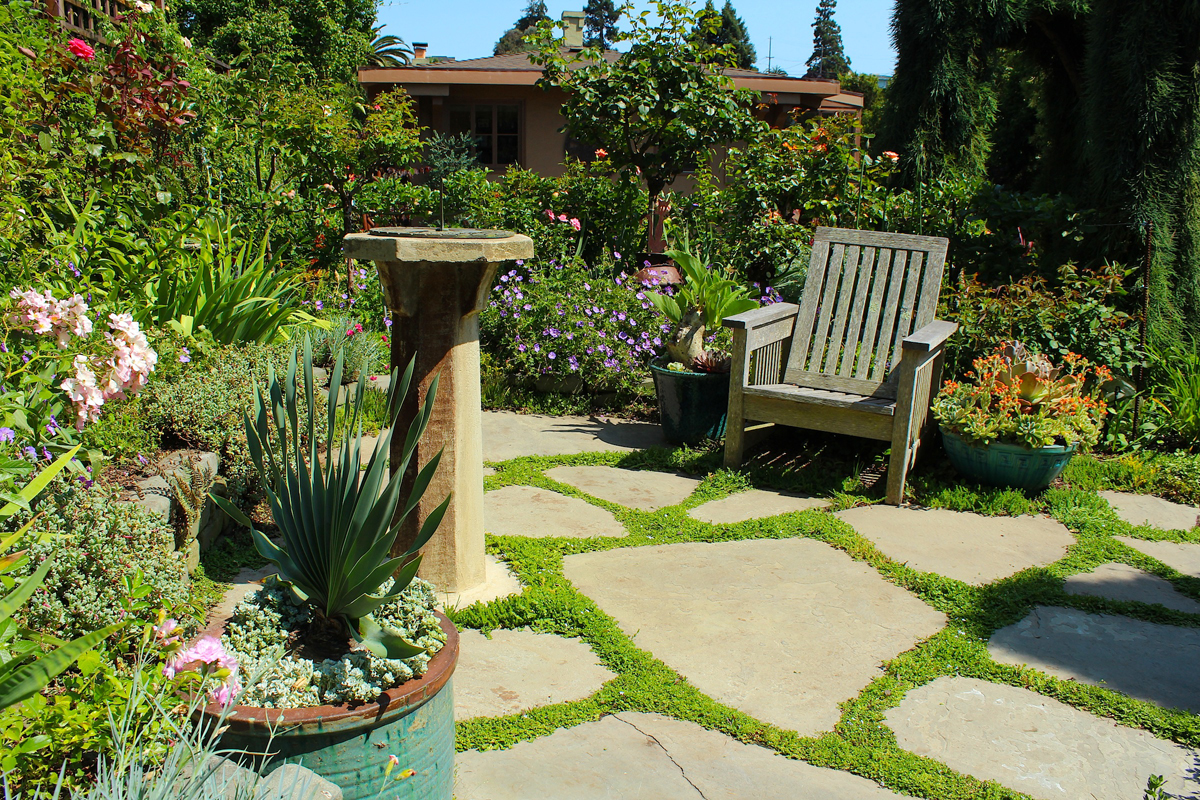

In designing your landscape, form should follow function.
Was your patio too small for entertaining this summer? Did you, or your dogs, wear a dirty path in the grass to get from area to area? Or do you just want to remove some grass, water a little less or solve a drainage problem with a dry creek?
With those thoughts fresh on your mind, it’s time to make a list of the structural hardscape projects you’d like to complete before the garden beckons in the spring with plant fever.
Now what?
Ask yourself some preliminary questions. First, consider your personal style – are you traditional, natural or contemporary? Think about the existing area – do you want to use the same material as your house or other structures, or do you want something different? Identify whether you’d prefer creating a color contrast color or seamless hues of a single color.
Consider the type of material best suited to your project. Stone is sold by the ton — decomposed granite by the yard — your local landscape supply yards can help you determine how much you’ll need based on your measurements. Here are some of the choices that are commonly used for hardscape projects.
Flagstone – Can be used for a variety of landscaping projects, from paths to patios and walls. It can be mortared into place or simply set in decomposed granite or gravel so it remains permeable. Wondering what to do with the sidewalk strip in front of your house where the grass is perpetually dying? Consider some attractive flagstone set in decomposed granite. If you want a softer look, add a few Mexican feather grasses or a few small agaves or a boulder or two for interest.
River Rock – Available in a variety of size ranges, river rock is smooth and comes in a blend of colors. It can be used to create a meandering dry stream through your landscape or to solve drainage issues. You also can replace grass with an attractive contrast of natural material in your yard. It can be used to puddle below a water feature or a birdbath. Always be sure to vary the size of the rock in a dry creek, scattering in a few larger rocks before you put down the smaller size for a more natural look.
Pavers – Manmade pavers come in every imaginable color and size. The most commonly used are made of concrete and can be used for patios and porches, paths and even walls. They can be laid on a bed of sand, placed close together for a more manicured look, or can be laid with spacing to allow for either grass or pretty little groundcovers to grow between. Pavers create a more manicured, formal style in outdoor rooms.
Decomposed or crushed granite – Weathered granite that has broken down into small pieces and particles of silt, decomposed granite is commonly used in patios, paths and even beds with arid plants. It’s versatile as a filler for many different projects – just be careful not to use it on a steep hill – our periodic gully washers can wreak havoc with it. You’ll want to make sure to use some sort of edging – metal or stone – to keep the granite in place and separated from grass or beds adjacent to it.
Gravel – Available in many different colors and sizes, gravel is a great material. It can work wonders to help with small drainage issues and it adds texture and contrast to the garden. Because it is larger, when used in a path, it is less likely to wash away than decomposed granite.
Chopped block – Most stone can be purchased as a rough-hewn brick-like shape that is more natural in form. These are used to build retaining walls, benches, planting beds or pathway borders.
Local Landscape Designer and Garden Coach Diana Kirby provides landscaping tips at http:/www.dianasdesignsaustin.com and writes a garden blog at https://www.dianasdesignsaustin.com

